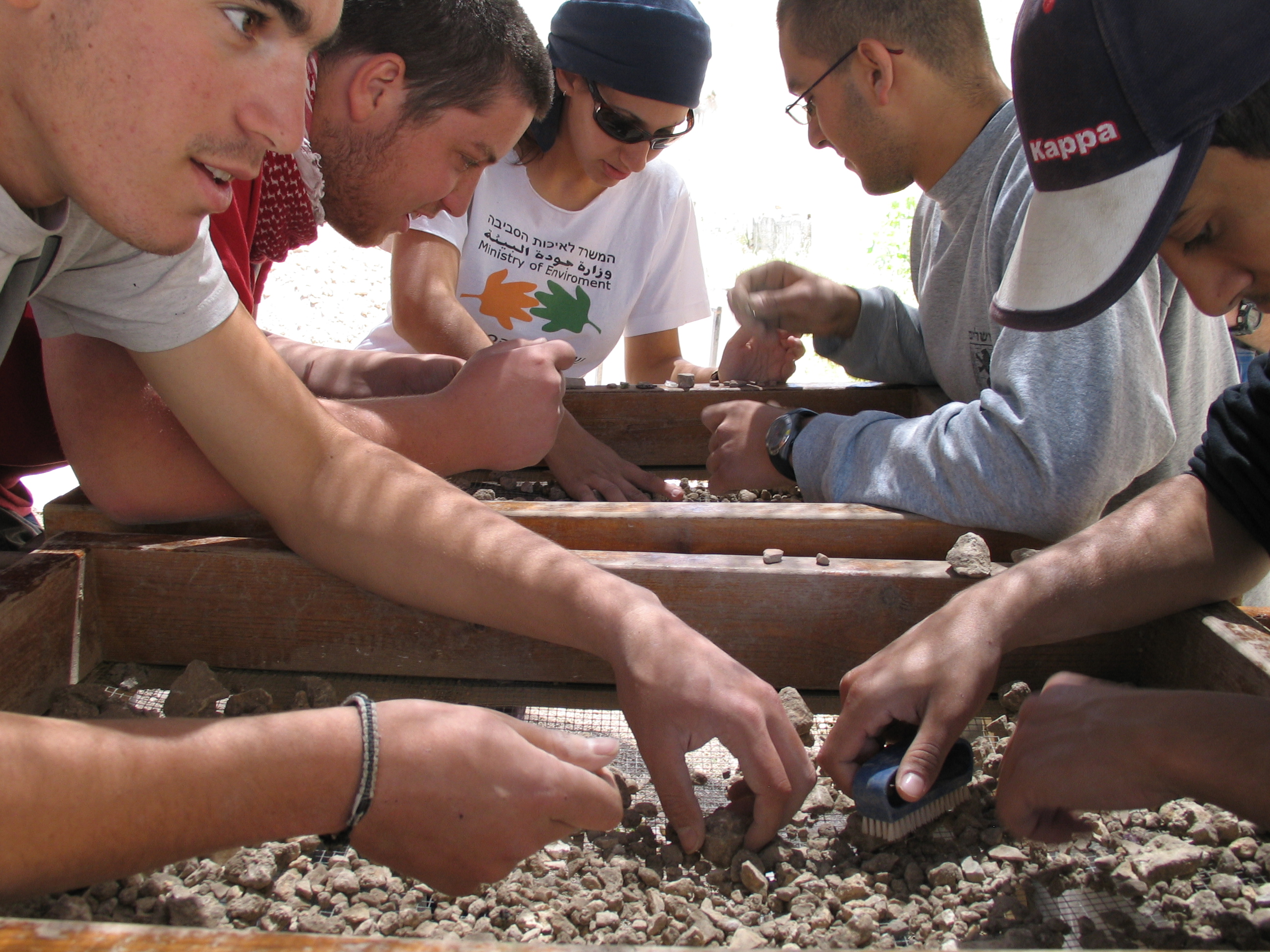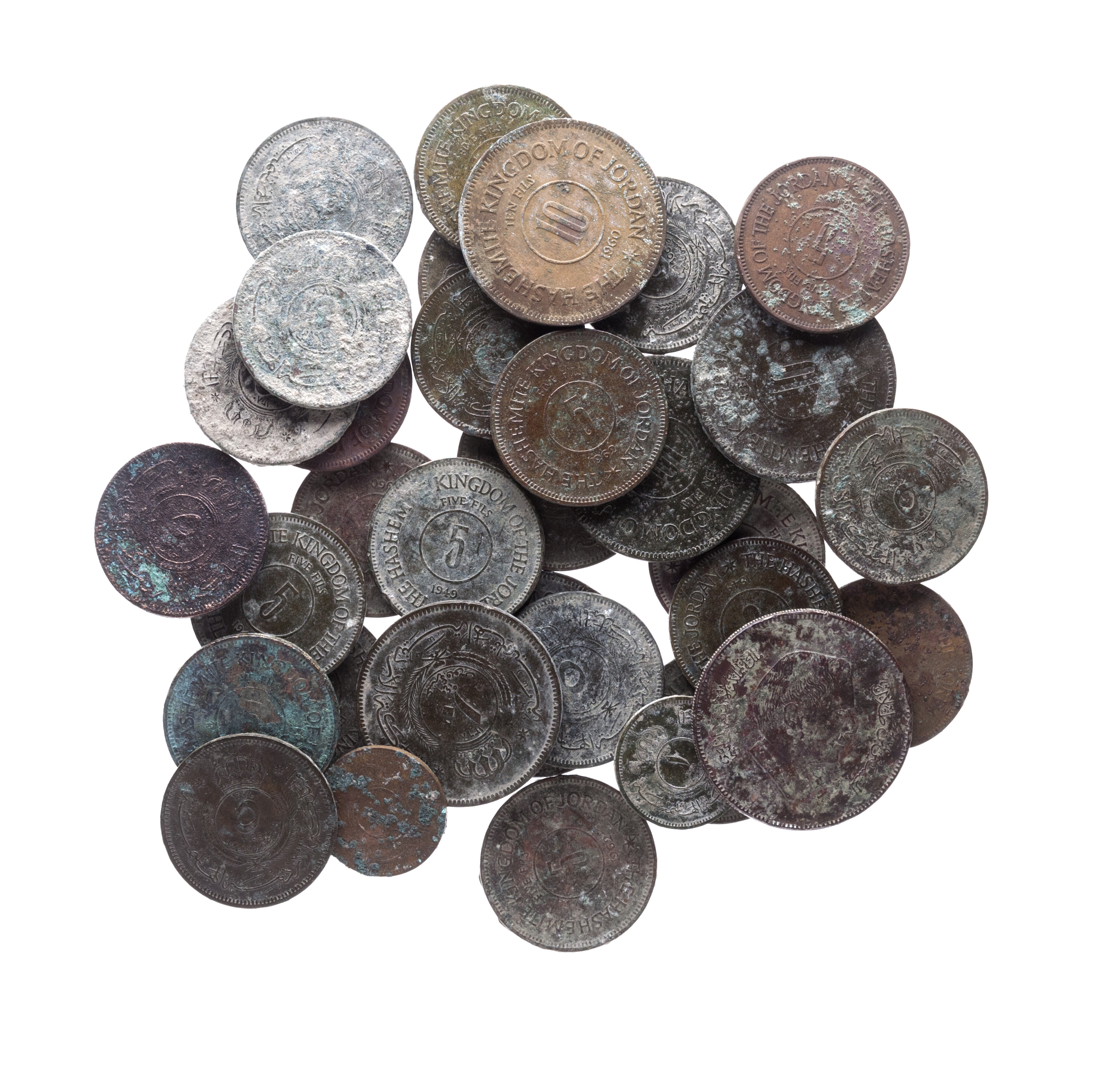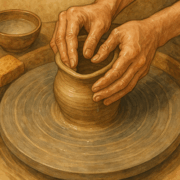Jerusalem Day and the Six-Day War
[youtube https://www.youtube.com/watch?v=oRjQy2gatzc&w=560&h=315]
“The Temple Mount is in our Hands!”
Machine gun magazines, bullets, Jordanian coins, and uniform badges were found in sifting the soil from the Temple Mount. The artifacts tell the story of the unification of Jerusalem during the Six-Day War.
Broadcasted on the army radio network, nothing is more symbolic of the unification of Jerusalem during the Six-Day War than the immortal words of Colonel Mordechai “Motta” Gur, commander of the Paratroopers Brigade, as they conquered the Old City, “The Temple Mount is in our hands.”
 We at the Temple Mount Sifting Project have this revelation daily as we work with soil and artifacts from the Temple Mount found by our project. The Temple Mount is literally in our hands.
We at the Temple Mount Sifting Project have this revelation daily as we work with soil and artifacts from the Temple Mount found by our project. The Temple Mount is literally in our hands.
As you know, our project is special in part because of the wide range of history it can help explain. Just as we have tangible artifacts from the Temple Mount’s ancient history, from the time of the First Temple’s destruction by the Babylonians, the Hasmonean wars, the Great Jewish Revolt which led to the destruction of the Second Temple, and the Crusader-Muslim battles, we have direct evidence of the Jordanian presence on the Temple Mount, and for the Six-Day War battles 50 years ago.
Yesterday, on Jerusalem Day celebrating the 50th anniversary of the reunification of Jerusalem, we had a booth in the Old City and displayed some of our special artifacts including our Opus Sectile floors, arrowheads, and artifacts from the Six-Day War. We had hundreds of people stop and learn about these artifacts as well as donate to our campaign to raise the funding necessary to continue our research. If you would like to support our research, please visit www.half-shekel.org or contact development@tmsifting.org for more information.
Some major news media covered the following artifacts in articles published yesterday. Here is a great one from The Times of Israel. It was also covered by The Jewish Press and on many Hebrew news sites.
Six-Day War – an Incredible Story
Among the artifacts that we have recovered from the Temple Mount are tens of items which may be related to the IDF’s arrival at the Temple Mount during the Six-Day War. Although these are not ancient archaeological artifacts, they have great historic significance and they can teach us about our recent history. It is usually thought that no battle occurred on the Temple Mount during the Six-Day War. The ammunition that we have found caused us to raised doubts regarding this premise and “dig” deeper into the details of the battle of Jerusalem during that time.
The IDF forces entered the Old City and the Temple Mount through the Lion’s Gate on Wednesday, June 7th 1967. The Jordanian forces had fled the city early in the morning, but some resistance pockets and sniper positions remained on the Temple Mount and the Old City. The previous day, the Jordanian military was positioned on the Eastern city wall, of which the Temple Mount’s Eastern wall is a significant part. On the night of June 6th, a special commando unit and some tanks were ordered to capture the Mount of Olives. They mistakenly lost their way, and instead of reaching the road towards the Augusta Victoria building, they reached the Kidron Bridge to the Gethsemane Church. The bridge’s location left them completely open to massive fire from the Jordanian positions on the wall above, killing 5 soldiers. During the rescue attempts, the IDF soldiers on the bridge fired back at the Jordanian positions. The story of this engagement is described well by Moshe Natan in his book, “The War for Jerusalem.”
In order to better understand our artifacts, we spoke with Rabbi Yoel Bin-Nun who was a part of the paratroopers force that entered the city through the Lion’s Gate. He said, “Following the Kidron Bridge battle, the commander of the Jordanian battalion in the Old City asked permission to evacuate the Old City since he realized that the IDF was encircling it. The Egyptian General of the Eastern front did not understand the symbolic significance of the Old City and the Holy Sites [for Jordan] and allowed the retreat. The Jordanians fled the city [on June 7th] early in the morning. The IDF did not know that, and at 7am bombarded the city walls with artillery fire in order to make the Jordanian soldiers withdraw from the walls. One artillery shell that missed the target killed three of our soldiers […] From the minaret near the Gate of the Tribes, a Jordanian soldier shot at us, but we managed to take him down before he could hit one of our men. As we entered the gate into the Temple Mount, paratroopers shot bursts of fire into the air to intimidate [the Jordanians], but Motta Gur (the commander of the brigade) immediately gave his famous order, “Cease Fire! All forces cease fire! A holy place, do not shoot. The Temple Mount is in our hands.”
- A 9 mm casing, manufactured in 1952, with the Hebrew letters “MIT,” which is an acronym for the State of Israel, Military Industry (Photo by Tal Rogovski).
- A magazine of an Israeli made Uzi sub-machine gun (Photo by Tal Rogovski).
- 9 mm bullets used as an Uzi’s ammunition (Photo by Tal Rogovski).
- A 7.62 mm blank cartridge manufactured in 1957, probably used for firing an anti-tank grenade from a Belgian made Fal or “FN” rifle (Photo by Tal Rogovski).
- Two 50-caliber projectiles probably fired from a Browning heavy machine gun. The bullet tips are warped indicating that they hit a hard surface (Photo by Tal Rogovski).
We also recovered a 25 round magazine of an Israeli made Uzi sub-machine gun, which served as the personal weapon of every IDF commander. There are also several 9 mm bullets – the Uzi’s ammunition. A number of 9 mm bullet casings were found as well. One casing, which was produced abroad, has a manufacture date of 1956. Another 9 mm casing was manufactured in 1952 and has the Hebrew letters “MIT,” which is an acronym for the State of Israel, Military Industry. These bullets and casings attest to the fact that during the Six-Day War antiquated ammunition was used. In addition, a 7.62 mm blank cartridge with a headstamp date of 1957 was found. This round was probably used for firing an anti-tank grenade from a Belgian made Fal or “FN” rifle which was commonly in service of the IDF during this period. Among the ammunition that was found were two 50-caliber projectiles probably fired from a Browning heavy machine gun. The bullet tips are warped indicating that they hit a hard surface. It is likely that these bullets originated in the return fire of the IDF soldiers pinned down on the Kidron Bridge shooting at the Jordanians positioned on the Eastern wall of the Temple Mount.
Yaakov Goldfine, a soldier who was a sniper in the Jerusalem Brigade and entered the city from the Dung Gate, gave us a further explanation about the weapons used during the war. “We were using an English Enfield rifle which we upgraded to be used as a sniper rifle. For backup, we had the Belgian FN which was used by the infantry soldiers. […] I entered the gate and ascended the Temple Mount. It was easy to see how the Jordanians used the Temple Mount as a military fortification. In spite of that, our orders were not to shoot at the Old City with heavy weaponry or bomb it from the air. The neutralization of the Jordanian positions was done by the infantry forces, and it cost us losses.”
[youtube https://www.youtube.com/watch?v=oRjQy2gatzc&w=560&h=315]
Among the coins discovered by the Temple Mount Sifting Project are four corrugated aluminum Agora coins. These are Israeli coins minted in 1967 and 1968 and which must have fallen out of the pockets of IDF soldiers or the first Israeli visitors who arrived at the Temple Mount following the Six-Day War.

Furthermore, the sifting yielded nearly forty Jordanian Hashemite Kingdom coins. Almost all the coins were minted prior to the Six-Day War, when the area was under Jordanian control from 1948-1967.
Though Israel is celebrating the 50th anniversary of the unification of Jerusalem, and Gur’s famous statement is being remembered and widely shared, the Temple Mount itself has a more complex reality. The first Jordanian coin from the sifting was discovered on June 6, 2005, the 38th anniversary of Jerusalem’s unification. This coin was minted in 1991, and probably arrived at the Temple Mount in the pocket of a Muslim worshipper or a Waqf employee who worked on the Temple Mount. The Jordanian Dinar (and its denomination –piasters) has remained a legal currency in the West Bank, continuing from 1967 until today.
Two small metal badges depicting a Jordanian flag were also discovered in the sifting and may have been pinned to Jordanian army uniforms. The post-war Jordanian artifacts reflect the complex political situation on the Temple Mount. Officially, the State of Israel holds sovereignty over the area, but the state has de facto given some authority to the Jordanian Kingdom via the Islamic Waqf.
It is amazing how our artifacts really express these complex situations and these moments in time. It is research like this that makes me truly love archaeology and the different ways that it can be used to understand our past. This research falls into a somewhat new category of archaeology known as “Modern Conflict Archaeology” which takes an interdisciplinary approach to try and understand the artifacts created during modern conflict. (Definitely check out the above website, because it is a truly fascinating new approach to archaeology.)
To support more research like this, go to www.half-shekel.org or contact development@tmsifting.org for more information.
Discover more from The Temple Mount Sifting Project
Subscribe to get the latest posts sent to your email.
















Reblogged this on Kattukse Vrienden voor Israël.
Wonderful post and such a fantastic information that you gave to us. Thank you so much for it. You made a good site and also you sharing the best information on this topic. I am impressed with your site’s blog. Thank you all
Thanks so much for the compliment! We’re glad you are enjoying our blog. :)